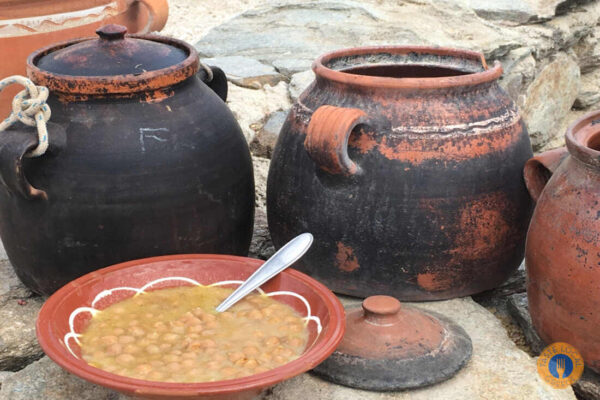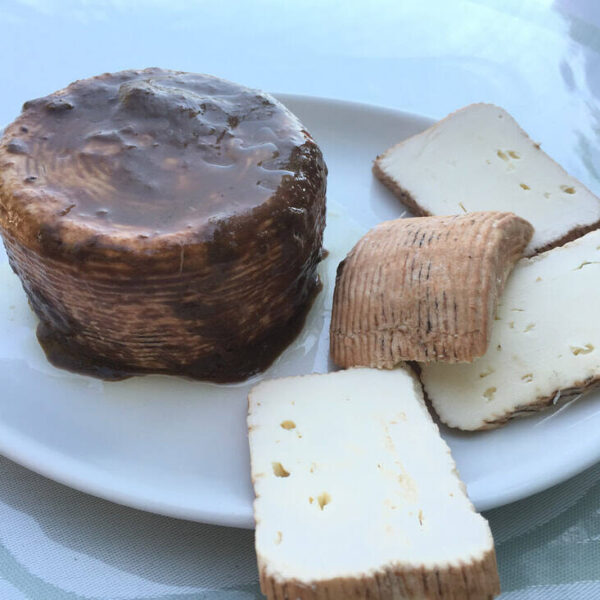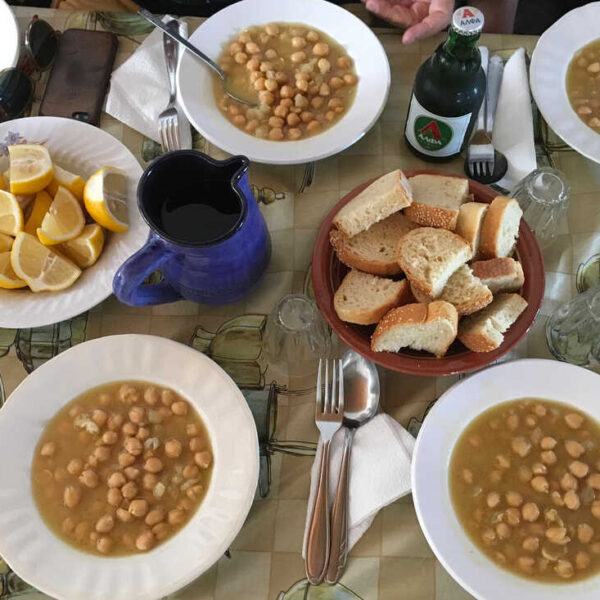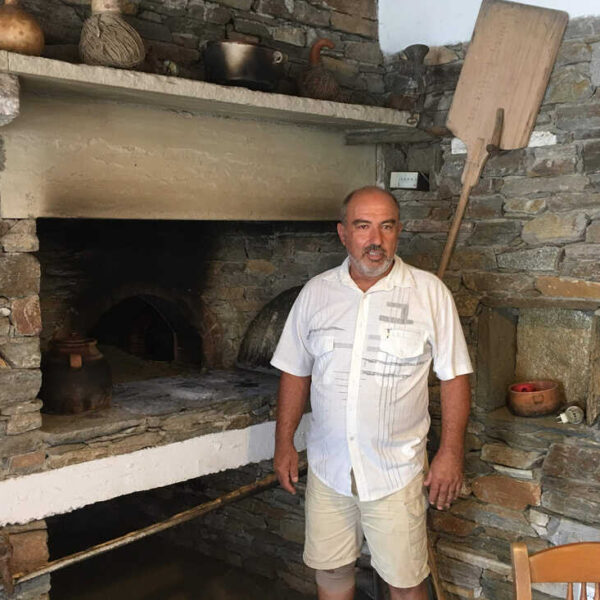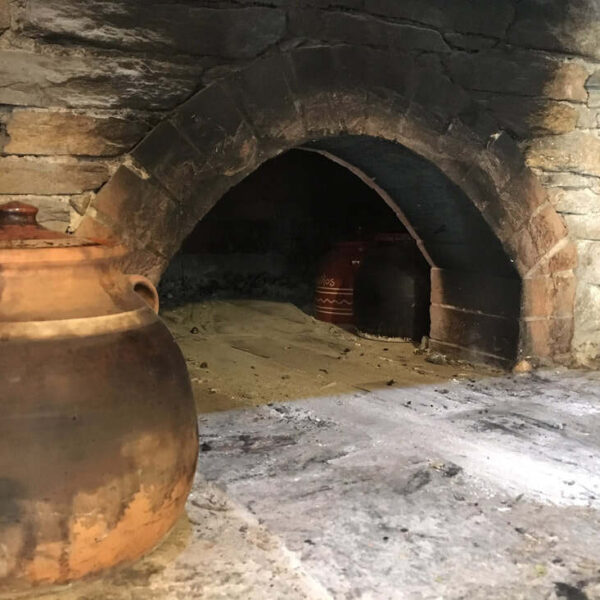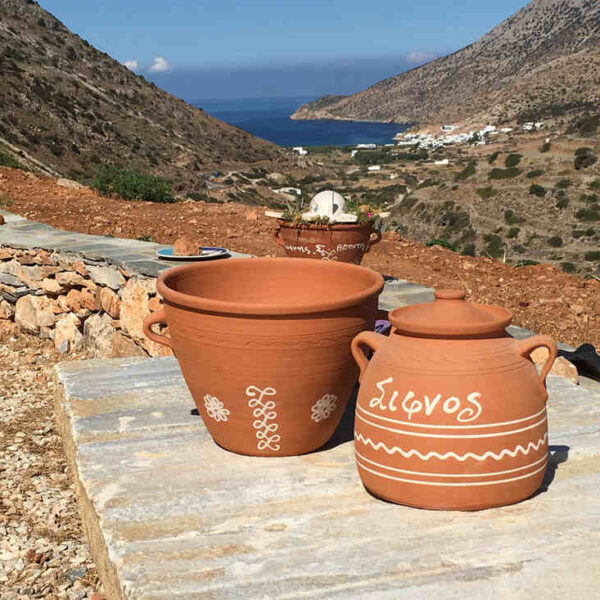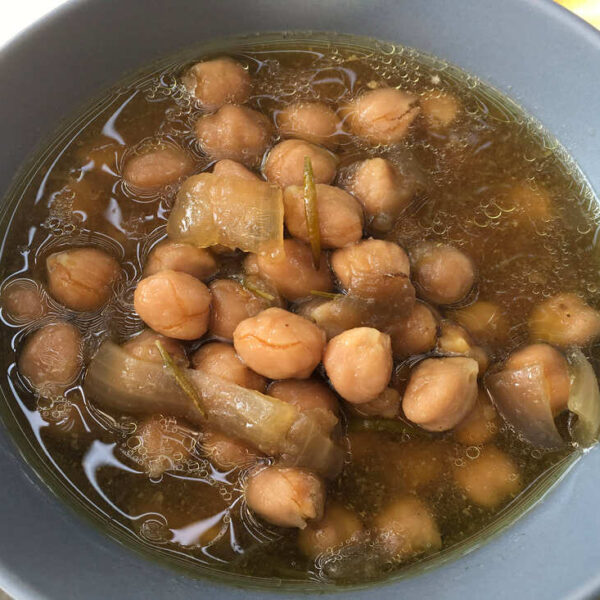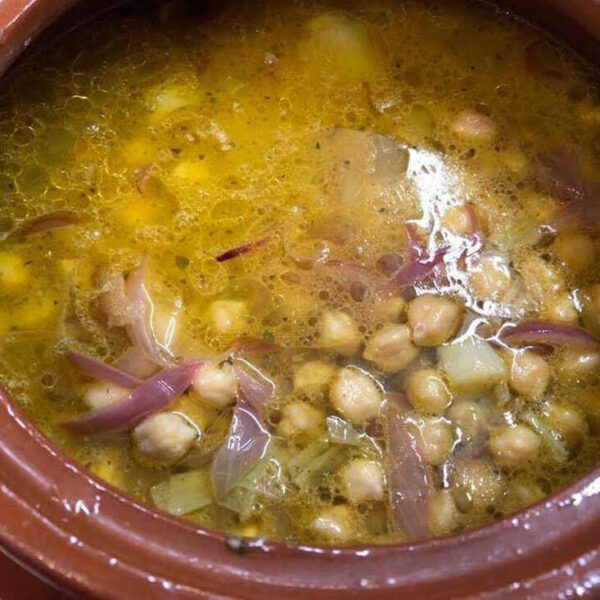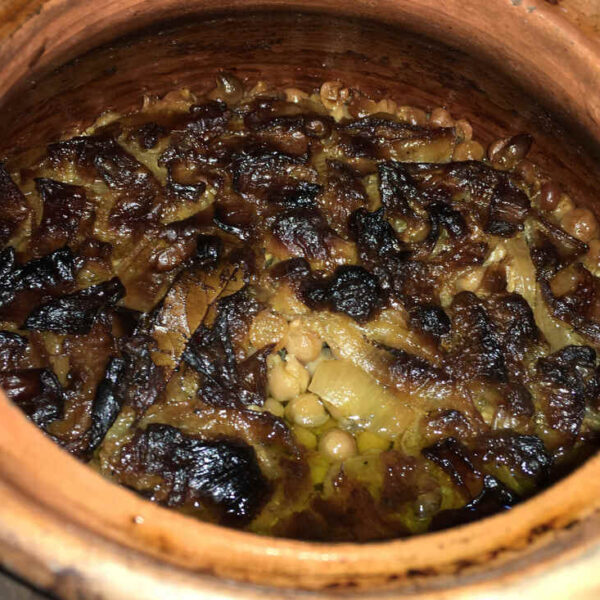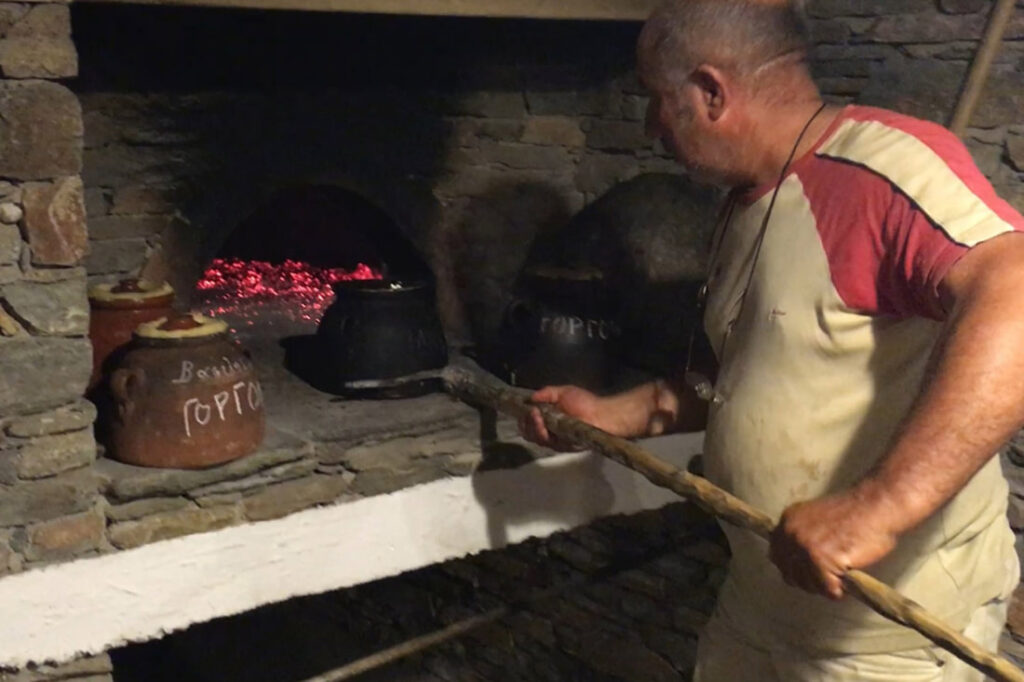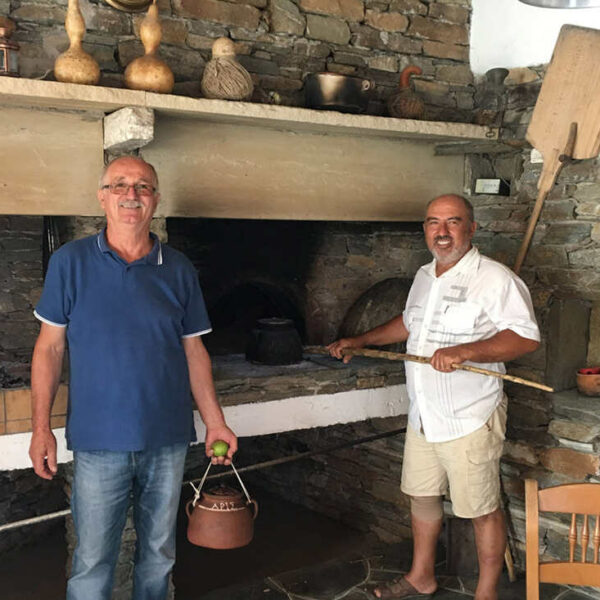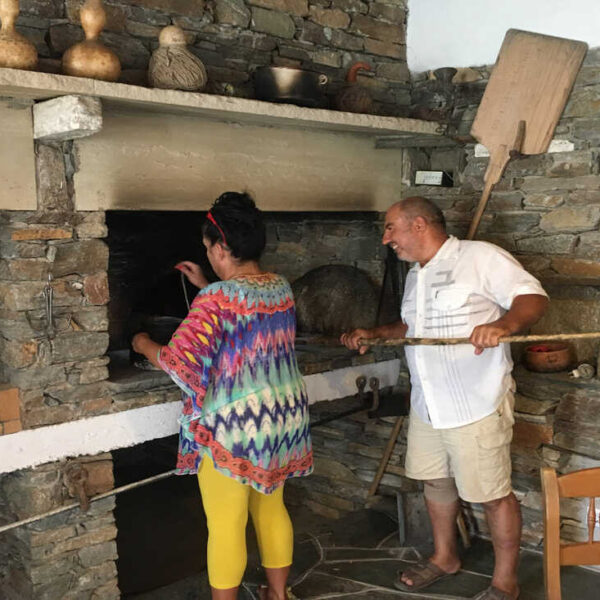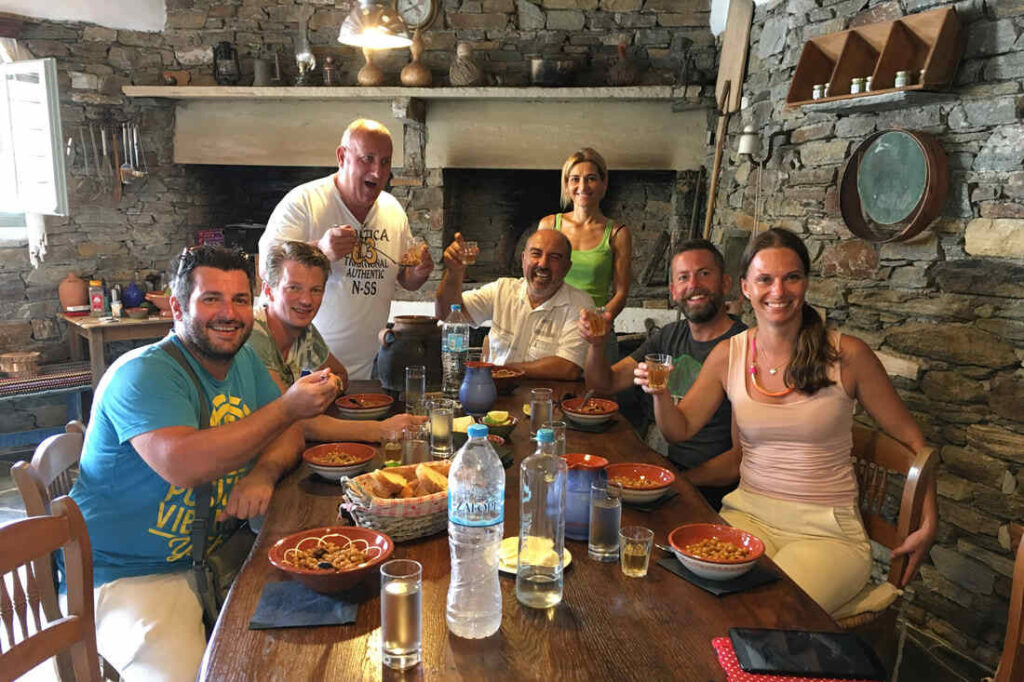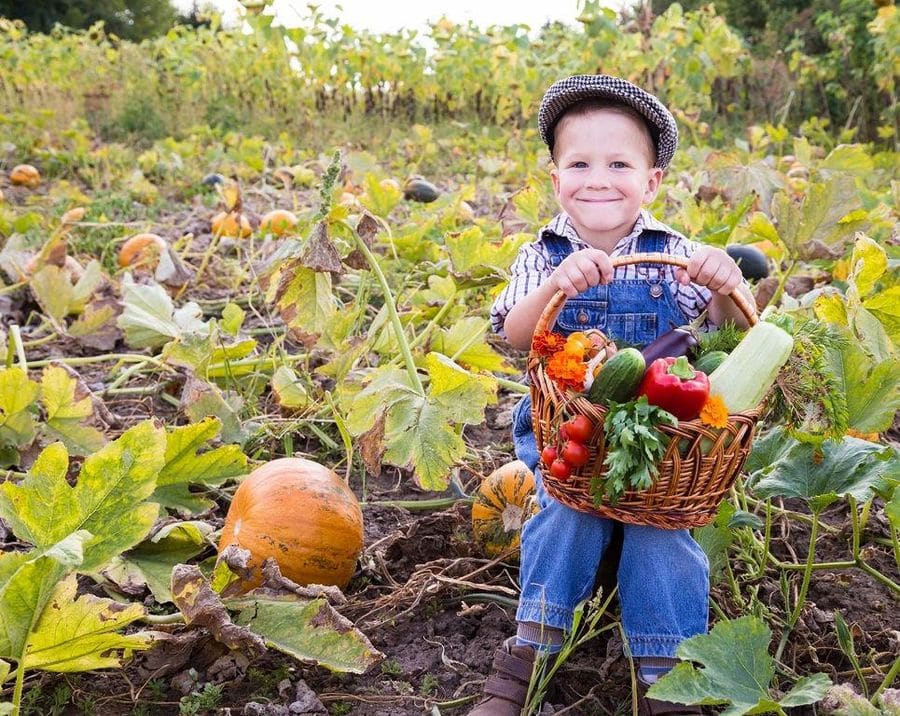Sifnos traditional Revithada (chickpea stew) is a simple legume that reveals its magical properties when cooked with three essential ingredients in a traditional Sifnian clay pot. It fills the island’s Sunday tables with flavours and aromas.
Once again, I was lucky to be invited by a new friend I made during my “traditional” wanderings on the island—Giorgos Narlis, the tireless farmer of Narlis Farm, known for its dryland cultivation. I had the chance to closely observe the entire process, from lighting the wood-fired oven to the moment the revithada and mastelo were ready to be served at the Sunday feasts. Revithada is Sifnos’ traditional Sunday dish. It is always cooked in a wood-fired oven inside a special clay pot called skepastaria.
Every Saturday night, all the women take their revithadas to the nearby wood-fired ovens for baking, a ritual passed down through generations. This way, by Sunday noon, after church, everyone has a warm meal ready for the Sunday table.
On Saturday afternoon, the oven is lit with wood, which burns until it turns into embers and loses its flame. Then, the embers are spread around the oven to make space for the revithada in the centre and the mastelo dishes around the edges. The oven reaches approximately 350°C and is ready to welcome the revithadas and traditional mastelo.
Little by little, the housewives began arriving with their clay pots—some blackened with soot and marked with their names in chalk, others newer—but all sealed with the traditional dough.
According to tradition, the dough was an old trick used by housewives to prevent bakers from stealing chickpeas rather than to keep the steam inside, as Giorgos confided to me.
The revithadas are first in, followed by the mastelo dishes. The oven is then sealed with a stone lid and damp towels to prevent oxygen from entering. This causes the embers to extinguish, and the stove begins cooking at 350°C, gradually losing heat until the following day when it reaches around 80-90°C.
The slow-cooking process begins and lasts 7-8 hours until the oven is opened the next morning, after the church service. The revithadas will make their way to the Sunday tables one by one!
The householders arrived to pick up their revithadas one by one, and each time, Giorgos carefully removed the skepastaria with the owner’s name. Everyone left with a small gift—a lemon, the essential ingredient for a perfectly thick and creamy revithada.
And here is the recipe, just as we made it that wonderful evening with Giorgos.
Ingredients:
- 1 kg small-seeded, dry-farmed Sifnos chickpeas (if available)
- 5 large onions
- 1 glass of olive oil
- 4 bay leaves
- Salt and pepper
Instructions:
- The night before, clean the chickpeas and soak them in soft water overnight.
- Rainwater is the best water to use, as they do in Sifnos, but you can also use bottled water.
- The next day, rinse the chickpeas three to four times with clean water, rubbing them to remove excess skins. Then, place them in the traditional skepastaria, the special clay pot, also known as tsikali.
- Add the olive oil, bay leaves, salt, pepper, and coarsely chopped onions.
- Pour in water, tilting the pot slightly, until the chickpeas are fully covered.
- For traditional cooking in a wood-fired oven:
- If you have a wood oven, bake them the traditional way.
- For home oven cooking:
- Preheat your oven to the highest setting for a reasonable amount of time to ensure it is well-heated.
- Place all the ingredients in a Dutch oven or similar covered pot. Make sure the pot is appropriately filled; using a large pot with too few chickpeas will cause them to dry out.
- Bake covered for the first two hours. Then, lower the temperature to 140-150°C (285-300°F) and continue baking for another 5-6 hours, checking occasionally to ensure the water has not entirely evaporated.
The table is ready to welcome the Sunday feast. Manouri, the island’s unique local cheese, patiently waits alongside olives, lemons, fresh bread, and a carafe of wine.
As my friend Giorgos Narlis confided, we serve the revithada hot with a squeeze of lemon and always have a small glass of wine to help digest the chickpeas and avoid excess gas. His father taught him this fabulous secret from a young age…
At the end of the meal, Giorgos’ sister, “To Maro tou Narlis”, arrived smiling, with the memorable neutral name given to women in Sifnos, holding a tray of melopita (honeypie) in her arms!
A traditional local dessert, Paschalino, deserves its exclusive description.
I was fortunate, and it was a great honour for me to sit at Giorgos and Dina’s Sunday table, invited alongside other friends, and taste their wonderful revithada made from the small-seeded, dry-farmed chickpeas they grow at the Narlis Estate.

